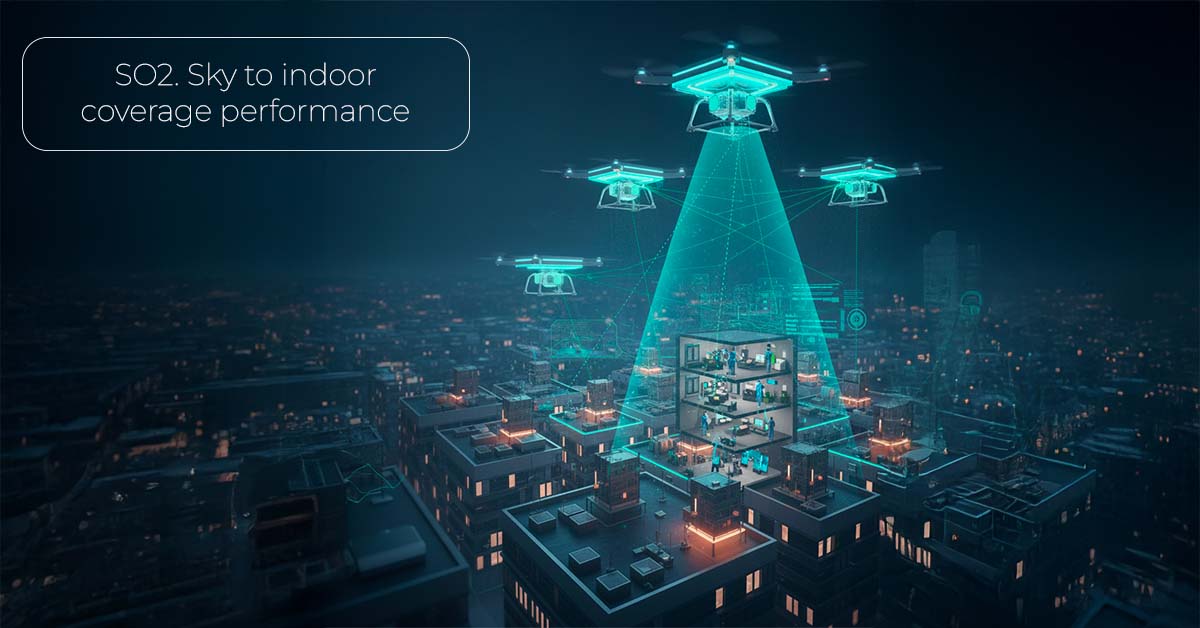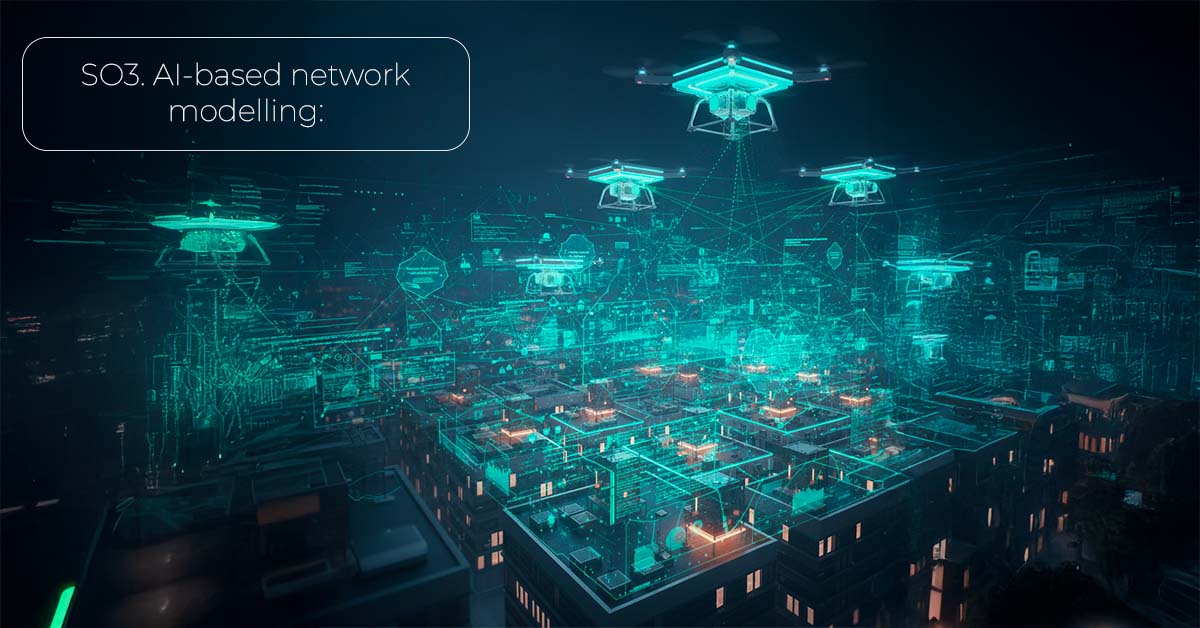Scientific Objective (SO) 1: Hypercell-based energy saving solution:

The first SO of this project is to define the protocols and algorithms of a new hypercell-based energy saving solution. In our vision, the drone-assisted hypercells are classified as basic coverage cells and paired with a set of overlaid terrestrial capacity cells. Capacity cells monitor their traffic conditions and key performance measures, and can autonomously shutdown, provided that its traffic load can be safely offloaded to its paired hypercell.
The hypercell also monitors its own traffic conditions and key performance measures and oversees turning on its paired sleeping capacity cells when required. The solution designed will allow capacity cells to be paired with multiple hypercells to avoid border effects and uncontrolled handovers. It will also permit the exchange of information between hypercells and their paired capacity cells through
AI models to facilitate optimal and adaptive shutdown and wake up decisions.
Scientific Objective (SO) 2: Sky to indoor coverage performance evaluation:

Given that 80% of the overall network traffic is consumed indoors13, and that most users stay indoors at nighttime when there exists the largest opportunity for network energy savings, the second SO of this project is to quantify the extent to which tethered drones loaded with a BS can effectively offload indoor traffic in a dense urban scenario as a function of its flight and networking configurations. To gain such understanding, we aim at empirically measuring for the first time the indoor signal strength and coverage quality provided by an outdoor BS flying on a tethered drone within different buildings with distinct characteristics and at various indoor locations, while the BS operates at different frequencies, flies at distinct heights and use various transmit power and antenna configurations. As part of this SO, we also aim at developing the corresponding data-driven radio propagation models to generalize this knowledge to any dense urban scenario.
Scientific Objective (SO) 3: AI-based network modelling

Building upon the outcomes of SO1 and SO2, the third SO of this project is to develop an AI-based model for the proposed 3D network and energy saving solution, capable of accurately predicting its energy efficiency even under network configurations - especially concerning our flying BS - that were not measured in the data. Predicting the exact network performance at a millisecond level is impossible due to the size and stochastic nature of cellular networks. Therefore, our goal is to optimize the statistical performance of the proposed 3D network.
Thus, in this SO, we aim to create lightweight, AI estimators that can accurately assess the energy consumption, coverage quality, and data rates provided by a BS. These lightweight AI estimators will be complemented with expert-based network models, based on stochastic, agent-based model (ABM) theory, to generalize inferences from the BS level to the network level, and statistically predict network energy efficiency for any new 3D network configuration or topology change.
Scientific Objective (SO) 4: AI-based network optimization

The fourth SO of this project is to push the boundaries of network optimization by advancing existing black-box, stochastic optimization concepts. Optimizing the proposed 3D network of the future using the AI-based model developed in SO3 involves addressing large-scale, stochastic, non-linear, non-stationary, and multiple objective optimization problems. These problems may consist of hundreds of optimization variables and trillions of candidate solutions. Our ambition is to create tailored off-line and on-line AI-based optimization frameworks that can identify high-performing carrier shutdown solutions in terms of network energy efficiency and user experience, while ensuring convergence in reasonable times. Achieving this SO requires incorporating expert network knowledge into the optimization problem to effectively navigate its complexities. Comparing the performance of the developed optimization tools with state-of-the-art reinforcement learning approaches is also an objective of this SO.
